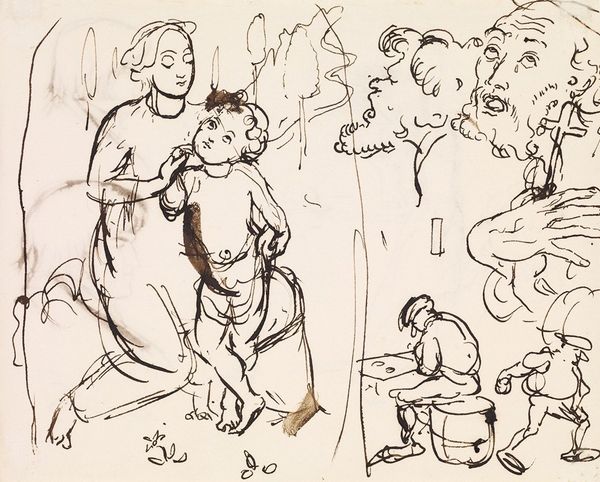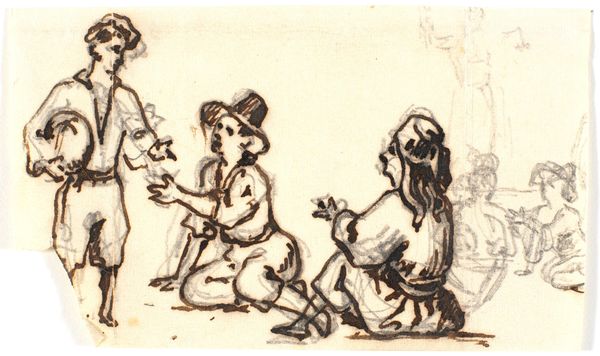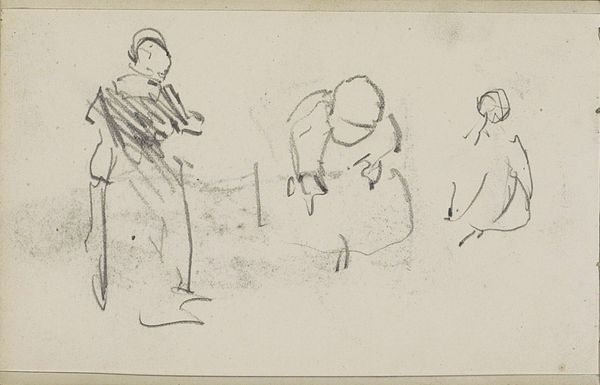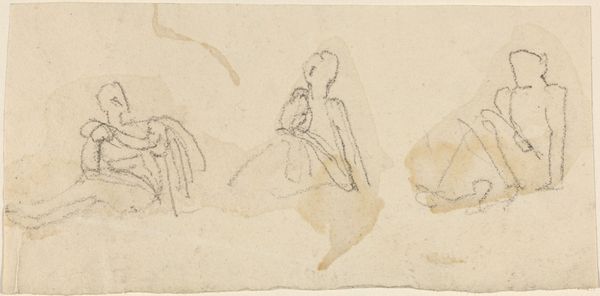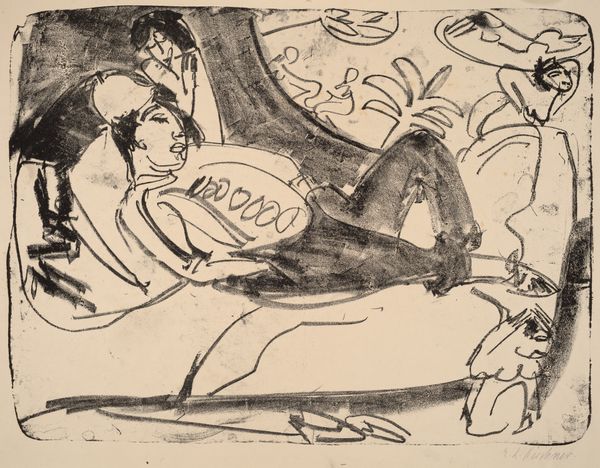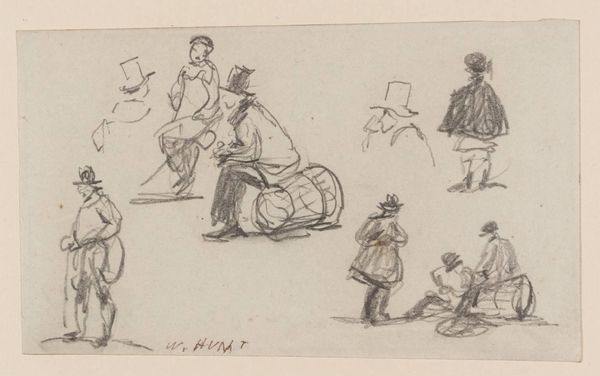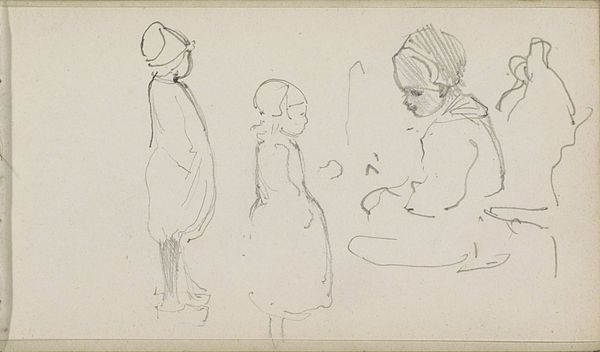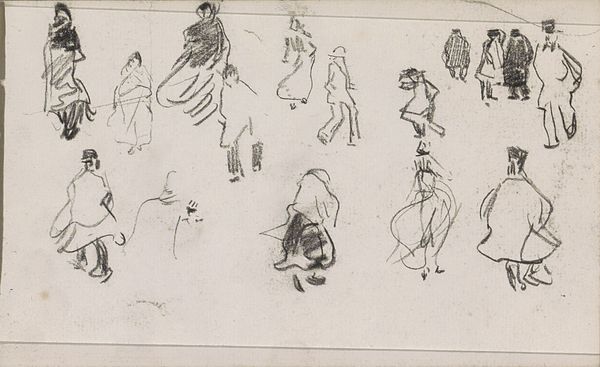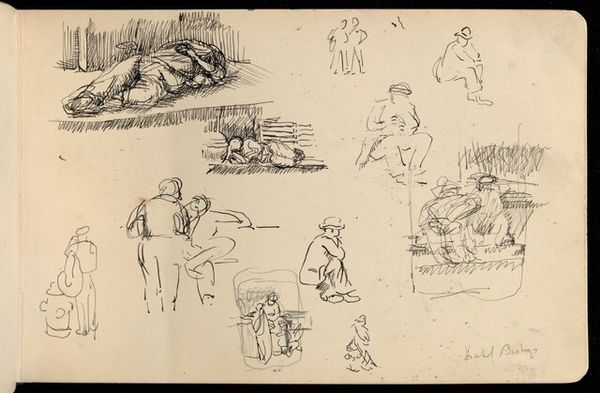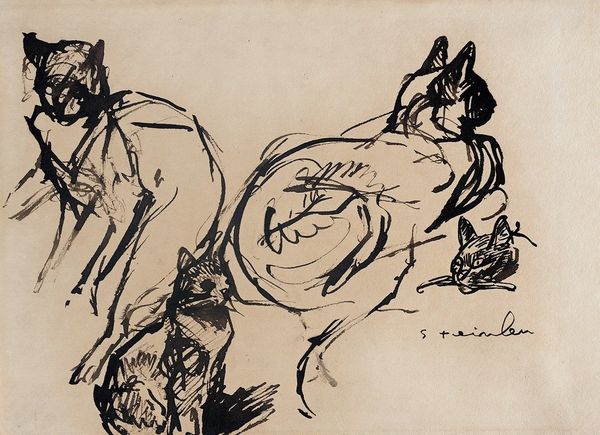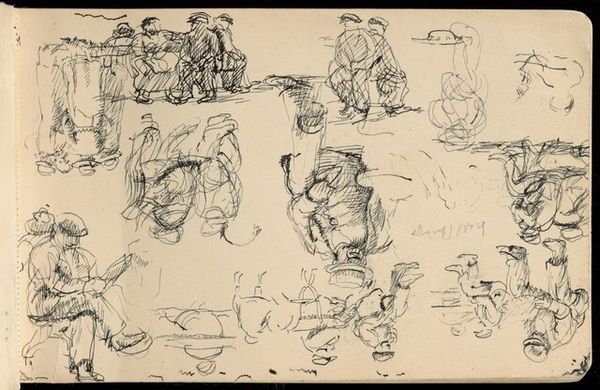
drawing, impasto, ink, pen
#
portrait
#
drawing
#
imaginative character sketch
#
figuration
#
personal sketchbook
#
impasto
#
ink
#
idea generation sketch
#
sketchwork
#
character sketch
#
ink drawing experimentation
#
intimism
#
pen-ink sketch
#
sketchbook drawing
#
pen
#
genre-painting
#
storyboard and sketchbook work
#
sketchbook art
Copyright: Public Domain: Artvee
Curator: This ink drawing, titled "Woman and Cat," offers a fleeting glimpse into Rik Wouters’ world, or perhaps his sketchbook. What are your initial thoughts? Editor: My immediate reaction is to its ethereality. The figures seem to emerge and recede simultaneously, thanks to the suggestive rather than definitive lines. The blank spaces on the tan paper are as crucial to the composition as the ink itself. Curator: Absolutely. Consider Wouters' choice of ink as his medium; it's inexpensive and portable, a working material accessible for spontaneous creation. Does that change your perspective on its formal qualities? Editor: The economy of line reinforces its strength. It is a triumph of the essentials. There's an interesting tension, wouldn’t you say, between its representational nature—we see a woman, a cat—and the abstract quality created by the minimal, almost gestural marks? Curator: It's a direct representation of labor in action. Wouters employs humble, everyday materials for quick sketches, maybe practicing figure drawing. It acknowledges the creative act itself, making no claims to luxury or permanence, challenging traditional art production's focus on commodity. Editor: I see your point about the materials speaking to accessibility, but consider how purposefully these marks describe form and volume. Note how Wouters’ confident strokes establish a playful interaction. The light suggests a domestic intimacy, a serene observation of daily life through masterful balance and simplified design. Curator: Yet, that “domestic intimacy” can also speak to the confinement and expected roles of women, no? Considering the social context, women were often restricted to the domestic sphere. The act of sketching, traditionally male-dominated, presents an interesting lens on Wouters’ views and society's expectations of both work and leisure. Editor: I appreciate the social dimension that you're bringing up, which gives even more nuance to this apparently simple sketch. Seeing through a structuralist perspective enriches how the signs work in "Woman and Cat" to generate the complexity in that small zone of ordinary life. Curator: By considering both the social context and the formal structure, we gain a fuller appreciation. The "sketch" represents not just an artwork but an insight into the period and the artist's practice. Editor: Indeed. It's an efficient work—perhaps more like an efficient study—with surprising subtleties waiting beneath that spontaneous seeming quality.
Comments
No comments
Be the first to comment and join the conversation on the ultimate creative platform.
